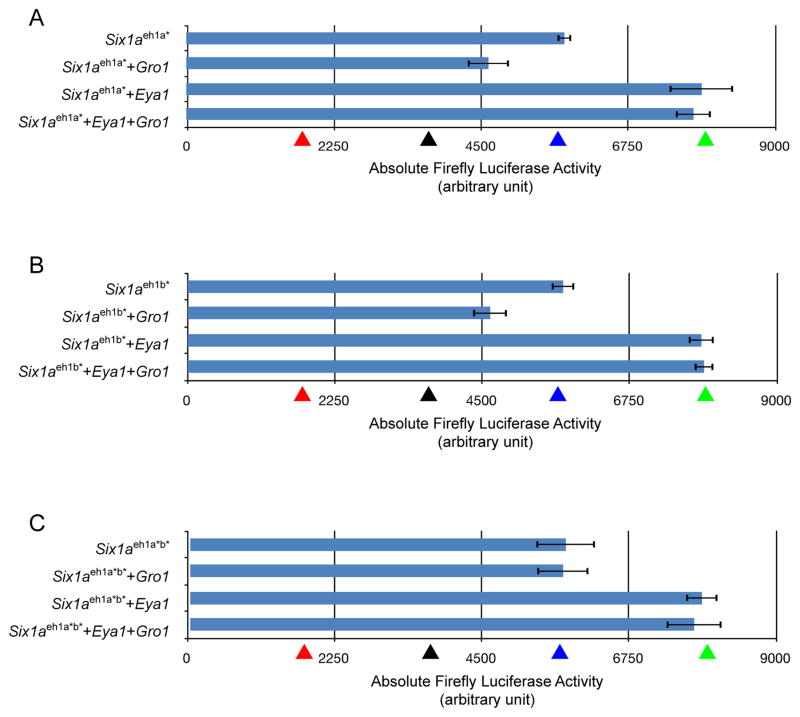Fig. 6.
GRO-binding sites of Six1a are necessary in vitro for Six1a’s interaction with zebrafish Gro1 and the subsequent repression of Six1a targets. The repression of Six1a targets normally observed in vitro when both six1a and gro1 are transfected is not observed when the prospective GRO-binding sites of Six1a are mutated. The ARE firefly luciferase reporter ARE-luc was cotransfected with pc-Six1a, pc-Six1eh1a* (A), pc-Six1aeh1b* (B), pc-Six1eh1a*b* (C), pc-Eya1, pc-Gro1, or combinations of these into COS-7 cells. Firefly luciferase activity in the cell lysate was normalized to the Renilla luciferase activity of pRL-CMV as an internal control. The mean fold activation from three independent experiments is shown expressed in arbitrary units. Statistical analyses were performed with Student’s t test. Comparisons where P < 0.005 were considered statistically significant. Absolute firefly luciferase activities for control combinations are shown as arrowheads (red for pc-Six1a + pc-Gro1, black for the empty vector by itself, blue for pc-Six1a alone and green for pc-Six1a + pc-Eya1). The sites mutated are shown in the schematics below each chart.

